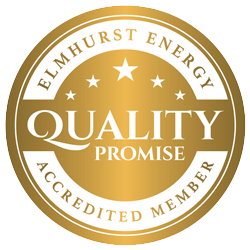Legionella
Landlords' Responsibilities
What is Legionella?
Legionnaires’ disease is a potentially fatal form of pneumonia caused by the inhalation of small droplets of contaminated water containing Legionella.
All man-made hot and cold water systems are likely to provide an environment where Legionella can grow. Where conditions are favourable (ie suitable growth temperature range; water droplets (aerosols) produced and dispersed; water stored and/or recirculated; some ‘food’ for the organism to grow such as rust, sludge, scale, biofilm etc) then the bacteria may multiply thus increasing the risk of exposure.
It is a simple fact that the organism will colonise both large and small systems so both require risks to be managed effectively.
What your tenant needs to know
Tenants should be advised of any control measures put in place that should be maintained eg not to adjust the temperature setting of the calorifier, to regularly clean showerheads and tenants should inform the landlord if the hot water is not heating properly or there are any other problems with the system so that appropriate action can be taken.
Where showers are installed, these have the means of creating and dispersing water droplets (aerosols) which may be inhaled causing a foreseeable risk of exposure to Legionella. If used regularly (as in the majority of most domestic settings) the risks are reduced but in any case, tenants should be advised to regularly clean and disinfect showerheads. Instantaneous electric showers pose less of a risk as they are generally cold water-fed and heat only small volumes of water during operation.
Additional actions for properties left vacant
It is important that water is not allowed to stagnate within the water system and so there should be careful management of properties left vacant for extended periods (eg student accommodation left empty over the summer vacation). As a general principle, outlets on hot and cold water systems should be used at least once a week to maintain a degree of water flow and minimise the chances of stagnation. To manage the risks during non-occupancy, consideration should be given to implementing a suitable flushing regime or other measures such as draining the system if it is to remain vacant for long periods.
Landlords are not necessarily required to record the findings of the assessment (this is only a statutory duty for employers where there are five or more employees), but they may find it prudent to keep a record of what has been done for their own purposes.
Reviewing your risk assessment
The law does not prescribe that the risk assessment be reviewed on an annual or biennial basis. It is important to review the assessment periodically in case anything changes but where there are difficulties gaining access to occupied housing units, appropriate checks can be made by carrying out inspections of the water system, for example, when undertaking mandatory visits such as gas safety checks or routine maintenance visits.
Your Professionally Prepared Report
We provide a professionally prepared report. This will detail the results from the survey along with observations. It will include risk ranked recommendations. We suggest a recommended control programme and provide advice for the owners and occupants. Photographs of key features and a system sketch are also included.
There is no prescription under law that the risk assessment be reviewed on an annual or biennial basis. However the assessment should be reviewed periodically in case anything has changed.


